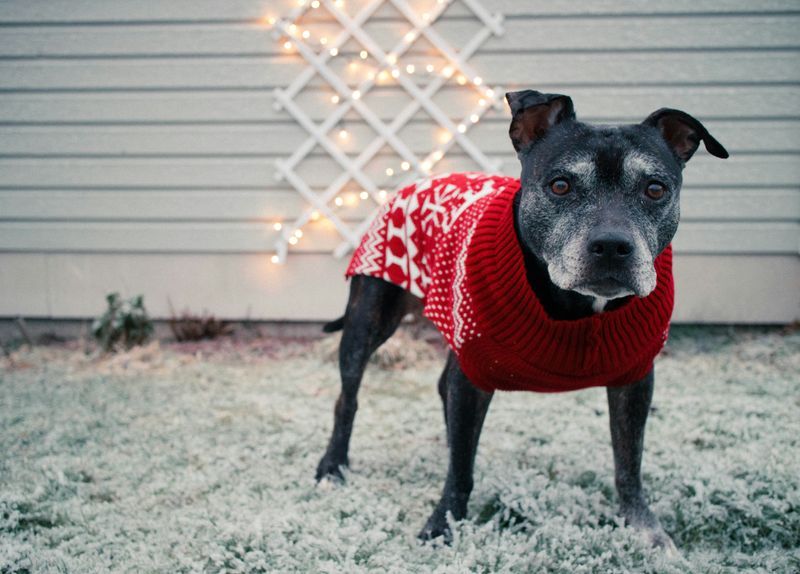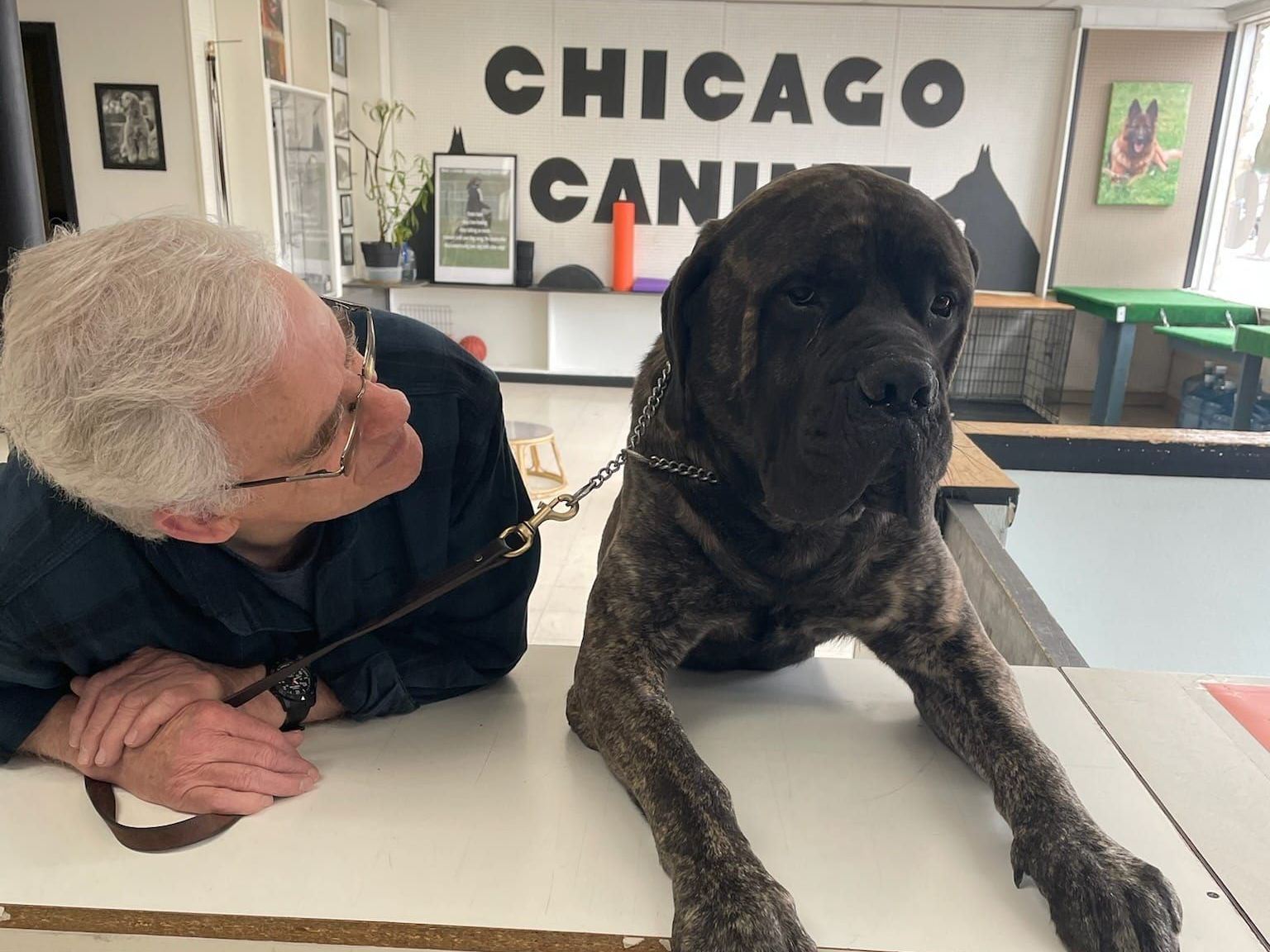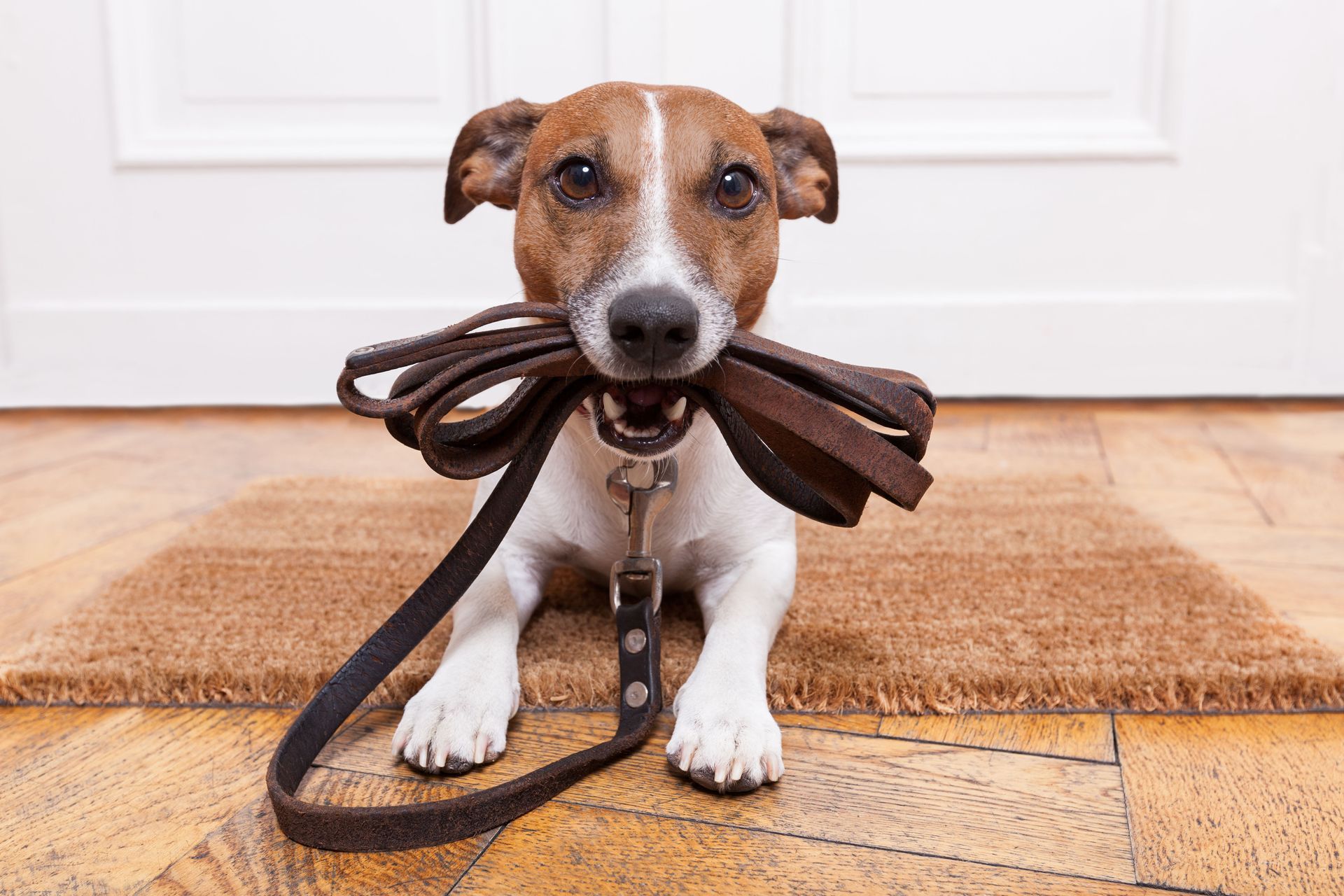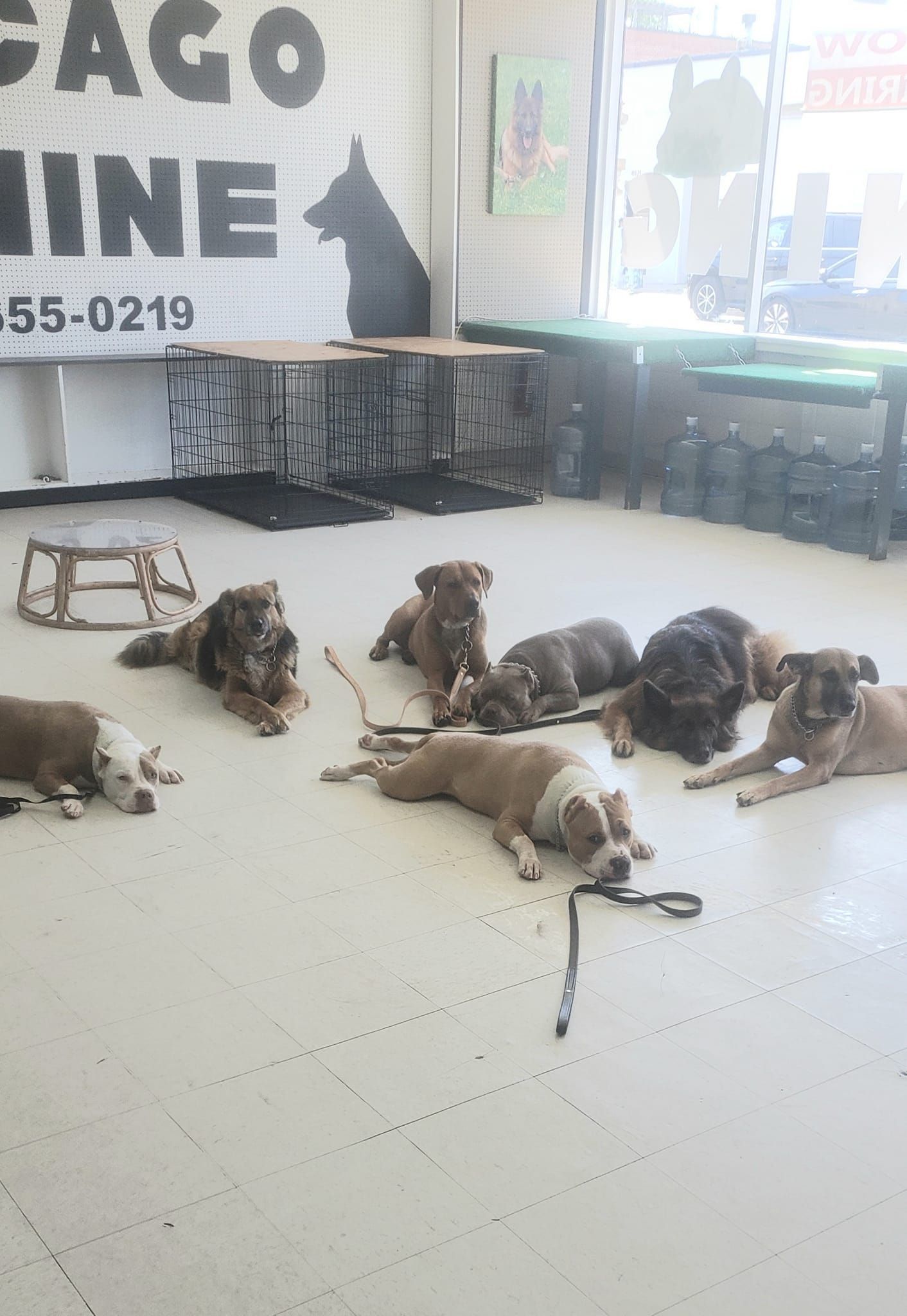Blog
Chicago Canine Academy

At the Chicago Canine Academy, we know that idle paws can lead to troublemaking at home. If your dog is unoccupied for a length of time, they may seek out ways to entertain themselves that cause problems for their humans. Time spent in an obedience school for dogs in Chicago can help them develop better behaviors, but this won’t prevent boredom itself. Today we’ll talk about some of the ways you can keep your dog busy indoors. TOYS Some dogs just go absolutely bonkers for new toys. A fresh dog toy can generate new inspiration to play and be a lot of fun for your pet. But, you don’t always have to buy new toys for your pet: the crafty ones among us may enjoy making a new dog toy, and if you have several toys already you can try washing and rotating them for a brand-new-toy feel. GAMES Just like humans, dogs are easily entertained by playing games. Sure, you could just give your dog a treat, but hiding the treats and having your dog look for and find them will provide more entertainment. You can hide them around the house, or hide one treat under one of three cups for a fun memory game. Classic games like hide and seek, tug of war, and fetch can help you and your dog play together—and get tuckered out together! NEW TRICKS Practicing a new skill can be very stimulating for your pet, and the one-on-one time necessary offers an added emotional benefit. To get even more value from the process of training, you might want to try teaching them something that’s useful. You could try teaching them to turn lights on and off, to fetch their leash, or even to put away their own toys! OUR OBEDIENCE SCHOOL FOR DOGS IN CHICAGO If your dog is persistently making messes or otherwise misbehaving at home or with others, it’s important to correct that behavior as soon as possible. Contact us today for information on our obedience training services.

The brutal winter temperatures are only beginning to emerge in Chicagoland, posing a common question for dog owners throughout the city: how cold is too cold for my dog to be outside? While we all know that dogs love spending outside to get much-needed exercise, if temperatures drop too low, you should monitor how much time your dog is spending outside. Determining Factors Like humans, all dogs are not created equal, and there are specific factors to consider when determining how long your dog should spend outside. Coat type: Some breeds such as Huskies or Newfoundland's have thick, double-layered coats that help them tolerate colder temperatures. Dogs with thin coats are not as tolerant to the cold weather. Coat color: Darker dogs have an easier time absorbing heat from the sun while they’re outside. Lighter coats don’t absorb heat as well. Size & weight: Consider both the size and weight of your dog. Body fat acts as a good insulator, however, don’t overdo it. Too much body fat will have serious health problems for your dog. Age and overall health : Dogs that are very young or very old will have a harder time keeping their body temperatures consistent. Temperature Guidelines Generally speaking, most dogs are fine in temperatures that are 45 degrees Fahrenheit or above. As temperatures dip to 32 degrees, consider monitoring your pet while they are outside to make sure they are behaving okay. As temperatures drop even lower, we recommend utilizing this helpful chart to see what is safe for your dog. From dog training in Chicago to helping answer your questions about how to give your dog the best life possible, we are your one-stop resource for all things dog! If you’re interested in any of our services, don’t hesitate to reach out to our team today!

There’s nothing cuter than those puppy dog eyes that are staring back at you on a daily basis. As private dog trainers in Chicago, we know firsthand how difficult it can be to resist giving your furry friend human food here and there. Some human foods are perfectly okay for your dog to eat in moderation. However, there are certain foods that should be avoided in order to keep your dog safe and healthy. We also recommend feeding your dog any human food from their bowls so they don’t get used to begging at the kitchen table! Popcorn Cuddling up and watching a movie isn’t complete with a bowl of popcorn. If you are eating air-popped, unsalted and unbuttered popcorn, it’s okay to give your dog a few pieces. However, not many people enjoy popcorn in this way. Bags of buttery and salted popcorn can lead to short-term dehydration for your pet. Plus, the kernels aren’t good for their teeth and gums. It’s best to avoid giving your pup this treat altogether. Avocados Persin, an oil-soluble toxin that is dangerous to your dog can be found in the skin and leaves of an avocado. This oil can cause respiratory distress, congestion, and fluid accumulation around the heart. Avoiding the skin and leaves is pivotal if you’re feeding your dog an avocado. Grapes Grapes are one of the most toxic foods that dogs can eat. They can cause kidney failure or, in some cases, death. Researchers still aren’t sure of the exact reasoning for grapes’ toxicity, but it’s best to avoid giving both grapes and raisins to your pup. These are just a few of the examples of what not to feed your dog this holiday season. If you feel unsure about a particular food item, simply look it up to make sure it is safe.

When it comes to dogs, many people think they have the training process under control. It’s not until there is a frustrating example of disobedience that dog parents begin to wonder whether or not they should invest in dog training in Chicago. While many basics can be taught successfully by dog parents, it’s crucial that you get the help that you need before your dog’s behavior begins to spiral out of control. Excessive Biting When your dog is a puppy, it’s only natural for them to bite as they begin to lose their puppy teeth and start to get their adult teeth. The teething process can be painful for them and it is their natural instinct to bite down on something. However, if your dog isn’t a puppy and is biting other animals, family members or friends, you’ll want to invest in our dog training in Chicago. Your dog shouldn’t be causing harm to other animals or people, and this is a classic sign that more intense training is necessary. Separation Anxiety This is a common problem in dogs who are too dependent on being around their humans for comfort. In the early stages of having your dog, make sure you practice leaving them alone for increasingly long periods of time. This will help them learn that you will always come back for them and that they don’t need to panic if you leave. Helpful tips include playing music for them or even going into another room and shutting the door to see if they are calm. Consistent training and practice can help both you and your dog become used to being apart. Escape Artists Is your dog somehow escaping their crate or other areas of confinement? This could potentially put them in danger if they are desperate to get out. Plus, if you are confining them, this means they aren’t ready to have free reign of the house. If your traditional training approach isn’t successful, contact our team at Chicago Canine Academy today. We are happy to help you and your dog work through troubling issues to get your dog on the right track!

Going for a walk with your dog is a great way to ensure both of you get the exercise that you need! However, dogs aren’t naturally content with being on a leash, so they need to learn that you are in charge and will determine where to walk them. dog training in Chicago, Il can help improve your dog’s leash-walking habits so both of you enjoy your walks. START WITH FOOD MOTIVATION Keeping your dog motivated with food is a great place to start. Decide the side that you want your dog to stay on (left is traditional) and they will soon flock to that side, as it’s where the treats will be! Start by walking in random patterns around your yard and rewarding your dog with a treat when they stay by you. Once your dog is staying by you more often than not, you can continue with positive reinforcement. DON’T USE THE WRONG METHOD Many people are tempted to buy a prong or shock collar when their dog is misbehaving on walks. They give their dog a hard yank when they are misbehaving, but this won’t teach your dog to stay by your side on walks and can even cause damage or injuries to your dog. Our dog training in Chicago, Il consists of teaching your dog to respect and listen to everything you have to say. CONSISTENCY IS KEY Your dog won’t learn everything in one day. It will take small, short training sessions to completely transform your dog’s behavior. Stay patient, the end result is worth it. Our team at Chicago Canine Academy is happy to help you with dog training in Chicago, Il. Contact us today to get started!

Whether your dog is experiencing separation anxiety from kids heading back to school to take or Covid. It's important to note that this is a shift in your pet’s schedule. Your dog is likely used to your family being home most of the time, so the transition into from Covid to the start of a new school year can be tough on dogs as well. Exercise is Key Many people drop their dogs off at dog daycare in Chicago because they want to ensure their four-legged friend is getting the exercise that they need. The school year brings a ton of chaos with everyone’s different schedules, so it’s important to still consider how much exercise your dog needs. At Chicago Canine Academy, we encourage you to pass on the responsibility of exercising your dog onto us! Your Energy will Radiate If you feel anxious or stressed, this will likely rub off on your dog as well. If you get worked up every time you say goodbye to your dog, your pet may feel anxious in return. If separation anxiety is problematic for your dog, more professional training could be beneficial. Our team at Chicago Canine Academy can help with this as well. Stimulate their Brain One way to tire your pet out, even if all you have is 10 minutes, is by exercising their brain. Psychological stimulation is just as exhausting, if not, more exhausting than physical exercise. Teach your dog a new trick or test their patience by making them wait for their treat before giving it to them. Are you interested in our dog daycare in Chicago? Contact us today to get started!

What if your dog loves being around you and other dogs, but when it comes to children, the two just don’t get along? When your furry friend is aggressive toward children, it can be stressful for both you and your child. We offer obedience training in Chicago to help your dog become less aggressive, but here are some tips to follow to have your dog and child become friendly together. MANAGE THE SITUATION When you know you have an aggressive dog, get ahead of the trouble before any arises. When you have good management, you are able to control a situation to reduce the potential risk. For example, don’t bring your dog to visit extended family if you know they won’t do well in that environment. Other tips include: TEACH THE DOG TO WEAR A MUZZLE Put the dog behind a baby gate or inside a crate when he or she is around small children Only allow the dog and child to be together if an adult is able to give their full attention to the interaction. TEACH YOUR CHILD HOW TO INTERACT Once you have a good management protocol intact, figure out how your child behaves around your dog. Make sure the interaction between your dog and your child is always supervised. This is a good basic rule to follow and you’ll be able to see how your child acts around your fluffy friend. Remember that teaching your child safe interactions with dogs helps avoid trouble between the two. Additionally, think about these rules when your child begins playing with dogs: Have your child ask for permission to pet a dog (yours or anyone else’s) Teach your child to pet a dog under the chin instead of over the head and avoid playing with ears, tails, and paws. Tell your child to pet in 5-second increments in order to figure out the dog’s behavior toward the child. ENROLL IN OBEDIENCE SCHOOL Trainers can help you teach your dog how to interact with children. If you think your dog could benefit from obedience training in Chicago, contact us today and we will help you work with your dog’s aggression.




Share On: